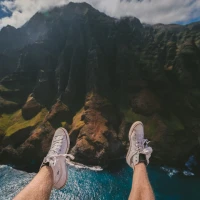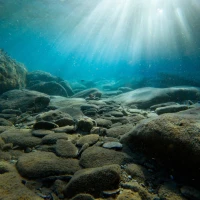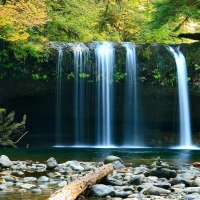Are you curious about exploring the wonders of the underwater world? Snorkeling is a perfect way to experience the beauty and tranquility beneath the surface. Whether you are a beginner or an experienced snorkeler, this article will provide you with the essential techniques and tips to make your underwater adventure unforgettable.
Why Choose Snorkeling?
Snorkeling is a popular activity that allows you to explore the underwater world without the need for extensive training or expensive equipment. It offers a unique opportunity to observe marine life up close and personal, providing you with a sense of serenity and awe that cannot be replicated on land.
Benefits of Snorkeling
Snorkeling offers a range of benefits for both your physical and mental well-being. Let’s explore some of the advantages:
-
Physical Fitness: Snorkeling is a great way to improve your cardiovascular health and endurance. The combination of swimming and breathing techniques engages various muscle groups, giving you a full-body workout.
-
Stress Relief: Being submerged in water has a calming effect on the mind and body. The tranquility of the underwater world provides a sense of relaxation and escapism, reducing stress levels and promoting mental well-being.
-
Connection with Nature: Snorkeling allows you to connect with the natural beauty of the ocean and its inhabitants. You will have the opportunity to observe colorful coral reefs, unique fish species, and other marine life, fostering a deeper appreciation for the environment.
-
Exploration and Adventure: Snorkeling opens up a whole new world of exploration and adventure. You can discover hidden coves, underwater caves, and vibrant marine ecosystems, creating unforgettable memories and a sense of wonder.
Essential Snorkeling Gear
Before embarking on your snorkeling adventure, it is important to have the right gear to ensure a safe and enjoyable experience. Here are the essential items you will need:
1. Snorkel Mask
A high-quality snorkel mask is crucial for a clear and comfortable view underwater. Look for a mask that fits snugly on your face, providing a watertight seal. Opt for tempered glass lenses, which are more resistant to scratching and shattering, and choose a mask with a wide field of vision for better visibility.
2. Snorkel
The snorkel is the tube that allows you to breathe while your face is submerged underwater. It is important to choose a snorkel with a comfortable mouthpiece and a purge valve, which helps to clear any water that enters the tube. Additionally, consider a dry-top snorkel that prevents water from entering when you dive below the surface.
3. Fins
Fins are essential for efficient swimming and maneuvering in the water. They provide propulsion, allowing you to move through the water with ease. Look for fins that fit snugly and are comfortable to wear for prolonged periods. Choose fins that are the right size for your feet to ensure optimal performance.
4. Rash Guard or Wetsuit
Depending on the water temperature and your personal preference, you may need a rash guard or wetsuit. These garments provide insulation and protection against the sun, as well as potential stings or scrapes from marine life. Select a rash guard or wetsuit that fits well and offers the appropriate level of warmth for the conditions you will be snorkeling in.
5. Flotation Device
If you are not a confident swimmer or want an extra layer of safety, consider using a flotation device. This can be a life jacket, a floatation belt, or a snorkel vest. Make sure the device fits properly and does not restrict your movement in the water.
6. Underwater Camera
To capture and share your snorkeling memories, invest in an underwater camera. There are various options available, from waterproof point-and-shoot cameras to advanced underwater camera systems. Choose a camera that suits your skill level and budget, and don’t forget to practice using it before your snorkeling adventure.
Choosing the Right Snorkeling Location
Selecting the right snorkeling location can significantly enhance your experience. Here are some factors to consider when choosing where to snorkel:
1. Visibility
Optimal visibility is vital for a rewarding snorkeling experience. Look for snorkeling spots with clear waters and good visibility, usually indicated by transparent or turquoise water.
2. Marine Life
Consider the abundance and diversity of marine life in the area. Snorkeling in locations known for vibrant coral reefs, colorful fish, and other interesting creatures will provide a more captivating experience.
3. Safety
Prioritize your safety by selecting snorkeling locations with calm waters and minimal currents. Avoid areas with strong tides or high surf conditions, as they can make snorkeling challenging and potentially dangerous.
4. Accessibility
Choose a snorkeling spot that is easily accessible, especially if you are a beginner or have limited mobility. Look for locations with shallow entry points and nearby facilities such as restrooms, parking, and snorkeling rental shops.
5. Environmental Sustainability
Support snorkeling sites that prioritize environmental conservation efforts. Snorkel responsibly, avoiding contact with coral or other marine life, and never litter or damage the underwater ecosystem.
Snorkeling Techniques for Beginners
If you are new to snorkeling, mastering a few basic techniques will make your experience more enjoyable and comfortable. Follow these tips to get started:
1. Practice in Shallow Water
Begin by practicing in shallow water where you can stand comfortably. Get accustomed to wearing your snorkeling gear and practice breathing through the snorkel while keeping your face submerged. Focus on developing a slow and steady breathing rhythm to conserve energy.
2. Clearing Water from the Snorkel
Water sometimes enters the snorkel, especially when you dive below the surface. To clear the water, exhale forcefully through the snorkel while keeping the top of the snorkel above the water. This will expel any water and allow you to breathe freely again.
3. Using Fins
To maximize your swimming efficiency, use your fins to propel yourself through the water. Kick your legs in a smooth and controlled manner, using long, sweeping motions. Avoid fast and frantic kicking, as it will tire you out quickly.
4. Equalizing Ear Pressure
As you descend underwater, the pressure on your ears increases. To equalize this pressure, pinch your nose shut and gently blow through it. This will help unblock your ears and prevent discomfort or potential injury.
5. Relax and Enjoy
Snorkeling is a leisurely activity, so remember to relax and enjoy the experience. Take your time to observe and appreciate the beauty of the underwater world. Avoid touching or disturbing marine life and maintain a respectful distance to ensure their well-being.
Tips for Experienced Snorkelers
If you are an experienced snorkeler looking to enhance your skills and take your underwater exploration to the next level, consider these advanced techniques:
1. Free Diving
Free diving involves diving below the surface without the use of snorkeling equipment. It allows you to explore greater depths and extend your underwater adventures. Proper training and knowledge of breath-holding techniques are crucial for safe free diving.
2. Underwater Photography
Capture the magic of the underwater world by exploring underwater photography. Invest in a quality underwater camera or housing and learn about composition, lighting, and the behavior of marine life. Practice patience and be prepared to take multiple shots to capture the perfect moment.
3. Night Snorkeling
Venture into the mysterious realm of the ocean after sunset by trying night snorkeling. Many marine species are active during the night, providing a unique and thrilling experience. Make sure to snorkel with a buddy and use dive lights for better visibility.
4. Deep-Water Snorkeling
If you are comfortable with deeper waters, consider exploring greater depths by snorkeling over drop-offs, underwater cliffs, or submerged reefs. Ensure you have the appropriate skills and equipment for deep-water snorkeling, as it poses additional challenges and risks.
5. Snorkeling Expeditions
Join guided snorkeling expeditions to explore remote and pristine snorkeling spots. These expeditions offer expert guidance, access to exclusive locations, and the opportunity to snorkel with knowledgeable guides who can teach you about the local marine ecosystem.
Snorkel Safely: Important Tips to Remember
While snorkeling is a relatively safe activity, it is essential to prioritize your safety and the well-being of the marine environment. Here are some important tips to ensure a safe and responsible snorkeling experience:
-
Snorkel with a Buddy: Always snorkel with a buddy, as it provides an extra layer of safety. If any issues arise, your buddy can provide assistance or seek help if necessary.
-
Check Weather and Tide Conditions: Before heading out, check the weather forecast and tide conditions. Avoid snorkeling during inclement weather or when there are strong currents, as it can be hazardous.
-
Respect Marine Life: Admire marine life from a distance and avoid touching, harassing, or disturbing any animals or plants. Remember, you are a guest in their home, and it is your responsibility to protect their environment.
-
Stay Hydrated: Snorkeling can be physically demanding, so remember to stay hydrated. Bring water with you and drink regularly throughout your snorkeling adventure.
-
Apply Sunscreen: Protect your skin from harmful UV rays by applying a waterproof sunscreen before entering the water. Choose a reef-friendly sunscreen to minimize harm to coral reefs and marine life.
-
Stay within Your Limits: Snorkel within your skill level and comfort zone. Avoid venturing too far from shore or into deep waters if you are not confident in your abilities. Remember, safety should always be your top priority.
Conclusion
Immerse yourself in the underwater world and create unforgettable memories through the art of snorkeling. Whether you are a beginner or an experienced snorkeler, these techniques and tips will enable you to explore the beauty of the ocean while prioritizing your safety and the environmental well-being. Remember, snorkeling is an adventure that should be approached with respect, curiosity, and a deep appreciation for the wonders of the underwater world. So grab your gear, dive into the depths, and let the mesmerizing world beneath the surface captivate your senses.










